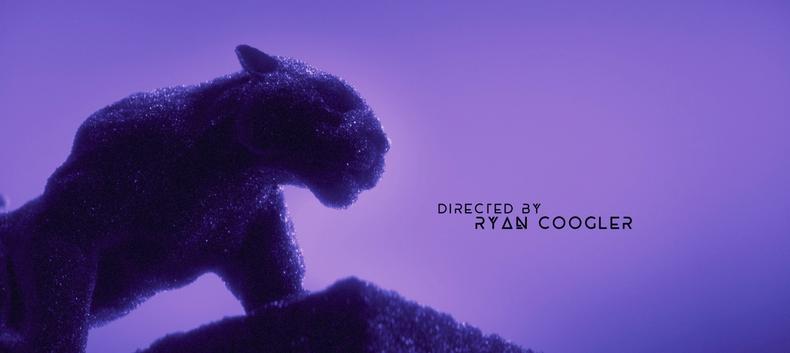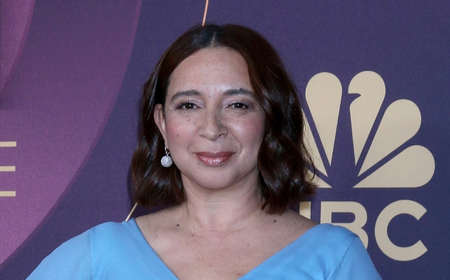
Watching a good movie can immerse you in a story so deeply that it’s easy to understand why the term “movie magic” exists. Despite this seamless immersion, movies require many people to shape them at every single stage, from preproduction to postproduction. Hundreds of people who help make movie magic happen are only seen onscreen when the movie credits roll. Keep reading to learn more about movie credits, their structure, and why they’re important.
 “Black Panther” Courtesy of Marvel Studios
“Black Panther” Courtesy of Marvel Studios
There are two types of film credits: opening credits and end credits.
- Opening credits: Opening credits happen before the movie starts (or as the opening scenes of the movie play out). This is where the big hitters are first seen: famous stars, directors, and studios, as well as top crew members. Generally, organizing opening credits can be a delicate matter. Most negotiations are made and settled by unions such as SAG-AFTRA, Writers Guild of America, and Producers Guild of America. Beyond that, explains writer Alison Cooper for How Stuff Works, “actors and directors have stipulations in their contracts about exactly where they should be placed...but there can be a lot of ego-stroking involved in placing the major players into the sequence.” After all, everyone wants to be credited for their work.
- End credits: End credits are a complete list of every person involved in creating the film—including set decorators, technical advisors, and gaffers. This is where all cast and crew are acknowledged for their work and is usually organized by the production company or producer. End credits can be quite an extensive list, especially for a blockbuster movie, but even indie film credits can have more hands involved than you’d think.
 KIM JIHYUN/Shutterstock
KIM JIHYUN/Shutterstock
Movie credits provide several important elements, including:
- Contributor recognition: Film credits acknowledge all the people involved in making a film. From extras to grip artists, it takes a massive team to get a movie from an idea to a finished product—and credits make sure that all contributors are recognized.
- Film information: Audience members often leave a theater, hit pause, or turn off the TV when the end credits roll. However, watching until the last credit rolls up the screen can illuminate some aspects of the film they may not have considered—think of animal wranglers, background artists, or costume choices.
- Industry networking: Movie credits also provide information for those in the industry. This is especially important for indie filmmakers and those just breaking into filmmaking. Finding cast and crew in film credits can lead to future work for up-and-coming folks. You may find the next big star, a visionary cinematographer, or an exceptional foley artist in the end credits.
 “Casino Royale” Courtesy Sony Pictures Releasing
“Casino Royale” Courtesy Sony Pictures Releasing
Some movie openings immediately start with the credits, and others with an opening scene, followed by the opening credits. These choices all depend on how the director wants to introduce not only the movie stars but also the movie itself. While opening credits and end credits can change depending on cast and crew, the general structure is usually the same.
Opening Credit Structure
- Distributor logo: Distributors acquire films and are responsible for getting the movie into theaters, as well as helping with marketing and advertising.
- Production company logo: The actual production of the film—which includes creative process, scouting locations, finances, and contracts—is handled by a production company.
- Top-billed cast and/or director: Usually the stars of a movie and the director (in the form of a line such as “A Robert Zemeckis film”) come after the company logos. Often, the top-billed cast in the opening credits are kept to a minimum.
- Film title: This is an easy one—the title of the movie!
- Supporting cast: The other actors in the movie who either play smaller roles or who are not as well-known yet.
- Crew members: Not all crew members are shown in the opening credits, but the big names are usually included, such as the following:
- Casting director
- Music composer
- Production designer
- Costume designer
- Associate producers
- Editors
- Director of photography
- Executive producer
- Producer
- Writers
- Director: The director is always the last in the opening credits, which has been negotiated by the Directors Guild of America. This may already be the second time the audience has seen the director’s name. And if you stay for the end credits, it won’t be the last.
End credits tend to get lost in the shuffle as people walk out of a theater. Producers have found creative ways to get audiences to stay, such as additional art, bloopers, or even an extra scene. (Think of Marvel’s tendency to tease the next movie in the end credits.) This is a great way to engage audiences further and make sure all cast and crew are given their due credit. End credits often happen in reverse from opening credits.
End Credit Structure
- Director: This might now be the third time an audience is seeing the director’s name. If you forgot the author of the movie before, you’ll remember it now.
- Writer: Sometimes the director and writer are the same person, and credits will avoid repetition by combining the credit with a phrase like “Written and directed by.”
- Producer
- Executive Producer
- Cast: Depending on the film, the entire cast can be included in one long scroll, starting with the top-billed. Sometimes films will choose to highlight stars individually and then roll into the scroll.
- Crew members: Department heads are listed, followed by their crew members. This will include the production and postproduction crew. Some specific departments might include:
- Costume
- Music
- Casting
- Electrical
- Set
- Editing
- Sound
- Visual effects
- Stunts
- On-set catering
- Additional credits: This portion can include special thanks, licensed songs, sponsors, disclaimers, or other participants who may not fit into the cast and crew category.
Staying for the movie credits allows viewers to “digest a film.” Of course, not all films require time for contemplation. When they do, the end credits provide space and time for viewers to gather their thoughts. Next time you watch a movie or show, keep an eye out for the credits—opening and end. For more details on what specific crew members do, take a look at our article on film crew hierarchy.



















